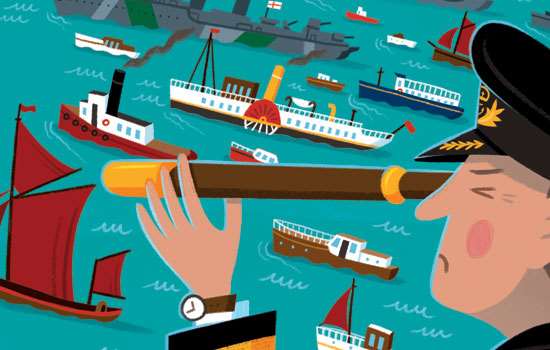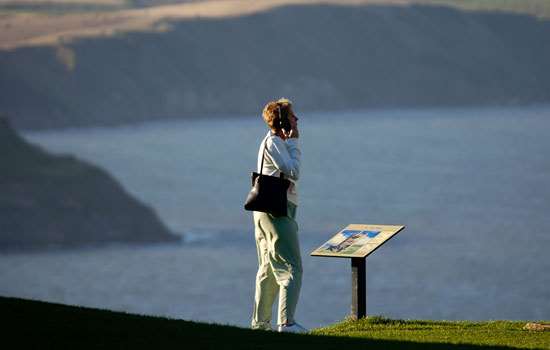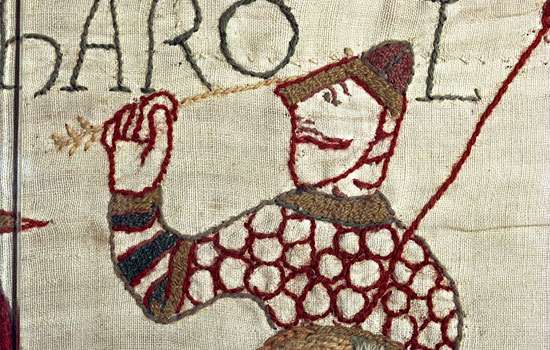BOB MARLEY (1945–81)
London provided a safe haven for Bob Marley during 1977 after he was caught up in a political dispute in his home country of Jamaica – a row that culminated in gunmen trying to murder the star at his home. Marley’s record label, Island, relocated him first to King’s Road in Chelsea, and then to a four-storey terraced house at 42 Oakley Street, along with his band The Wailers.
According to Marley’s then-manager Don Taylor, the musicians would spend their mornings playing football, before rehearsing or recording. And the formula clearly worked, as the band delivered some of their best music during this period – including their classic Exodus album. Despite being convicted of cannabis possession while living in London, Marley told journalist Vivien Goldman that he regarded the city as his ‘second home’.
AL BOWLLY (1899–1941)
Born on 7 January 1899 in Mozambique, Albert Alick Bowlly was once described as ‘Europe’s most popular crooner and famous radio and record star’ and was the voice behind much-loved songs such as 'Goodnight Sweetheart'. He made his first recordings, and established his reputation as a singer, in Germany in 1927. He arrived in London the following year, after an invitation to join Fred Elizalde’s band at the Savoy Hotel as vocalist and guitarist.
From 1930, he was a regular vocalist with Ray Noble’s New Mayfair Dance Orchestra and went on to sing with Lew Stone’s new Monseigneur Dance Orchestra. Later in the decade, he toured America and was given his own NBC radio series. In all, he recorded over 600 78rpm records between 1927 and 1941. Bowlly’s blue plaque is on Charing Cross Mansions, 26 Charing Cross Road – his home in 1933–34, at the pinnacle of his career.
BENJAMIN BRITTEN (1913–76)
He may be one of the UK’s best-loved composers but Benjamin Britten’s musicianship wasn’t always so well received. After moving into the top-floor rooms at 173 Cromwell Road – then a boarding house – with his sister Beth in September 1931, Britten would frequently tinker on his piano, to the annoyance of his fellow lodgers.
The Suffolk-born tunesmith, who was studying at the Royal College of Music at the time, was eventually rewarded for his endeavours, though, going on to compose world-renowned operas including Peter Grimes, Billy Budd and The Turn of the Screw, as well as a number of orchestral pieces. He and Beth moved out of the Cromwell Road digs in 1935, relocating to a flat in West Hampstead. When a friend asked the reason for their move, Britten replied, ‘Anything to get away from boarding houses.’
JOHN LENNON (1940–80)
As you might expect from a residence that once housed a Beatle (actually three Beatles – George Harrison and Paul McCartney also lived there at different times before Lennon), the basement and ground-floor flat at 34 Montagu Square has some colourful stories to tell. Lennon and Yoko Ono spent five months in the apartment from July 1968, while the Fab Four were recording The Beatles (which became better known as The White Album) at Abbey Road Studios.
In that short space of time, the flat not only provided the location for the notorious nude photo shoot that later graced Lennon and Ono’s Two Virgins album cover, it was also the subject of a police raid that led to Lennon being convicted for cannabis possession in November 1968. Three years later, fed up with the media storm that followed the bust, the Beatle and his Japanese-American partner emigrated to New York.
CLARA BUTT (1872–1936)
It’s probably just as well that Clara Butt lived in London, as she was booked to perform at the city’s Royal Albert Hall no fewer than 110 times during her illustrious career. The Sussex-born opera singer was undoubtedly one of the country’s biggest talents in the early part of the 20th century, counting Camille Saint-Saëns and Edward Elgar among her admirers, organising numerous fundraising concerts during the First World War, and appearing in front of a series of British monarchs by royal command.
Butt lived at 7 Harley Road with her husband, the baritone Robert Rumford, and their children, from 1901 to 1929. However, the latter part of her life was blighted by tragedy: her eldest son died of meningitis while still at school, and her youngest son killed himself. Butt herself passed away at her Oxfordshire home in 1936, after never fully recovering from an accident she suffered in 1931.
JIMI HENDRIX (1942–70)
When Hendrix first arrived in London in September 1966 – having been scouted by the British musician Chas Chandler – he was a barely known guitarist with potential. By the time he moved into the flat at 23 Brook Street in 1968, he was a bona fide rock god, having blown people’s minds with his guitar-burning antics at the Monterey Pop festival the previous year.
The residence – which occupied the top two floors of the building, and which Hendrix is said to have redecorated to his own taste – belonged to the musician’s British girlfriend Kathy Etchingham, a young DJ who had caught Hendrix’s eye at the Scotch of St James nightclub in Masons Yard. Though Etchingham was rumoured to be the subject of some of Hendrix’s biggest hits, including 'Foxy Lady' and 'The Wind Cries Mary', the couple drifted apart after Hendrix began touring the US in March 1969.
RALPH VAUGHAN WILLIAMS (1872–1958)
Born in Gloucestershire, Vaughan Williams enjoyed a lifelong relationship with London. The composer enrolled at the Royal College of Music in 1890 and, after studying at Trinity College, Cambridge, and serving in the First World War, returned to the city to write some of his best-known works – including 'The Lark Ascending' and 'Fantasia on a Theme' by Thomas Tallis.
Vaughan Williams moved to 10 Hanover Terrace, overlooking Regent’s Park, with his second wife Ursula Wood in 1953 – the year of Queen Elizabeth’s coronation. To mark the royal occasion, the composer delivered an arrangement of the psalm tune 'Old Hundredth', which was played during the ceremony at Westminster Abbey. Five years later, the abbey would become Vaughan Williams’ final resting place, following his death at the age of 85.
ERIC COATES (1886–1957)
Eric Francis Harrison Coates was an English composer of light music and, early in his career, a leading violist. After graduating from the Royal Academy of Music he combined playing in orchestras with composition. He created some of the best-known and loved pieces of English light orchestral music, including 'By the Sleepy Lagoon' (1930), which is still used as the theme music for Radio 4’s Desert Island Discs. He is said to have needed the right atmosphere to produce his work – his son Austin recalls how his father ‘couldn’t settle down to write music until he was properly dressed in the morning, complete with tie and Harris Tweed coat – and, perhaps, a Turkish cigarette’.
His blue plaque is on the north-west entrance of Chiltern Court, at the north end of Baker Street, opposite Melcombe Street, where he lived in flat 176 from 1930–39.
MUSICIANS & COMPOSERS BLUE PLAQUES MAP
Visit the blue plaques of musicians and composers across London for yourself, including plaques honouring Bob Marley in Chelsea, Freddie Mercury in Feltham, Clara Butt in Swiss Cottage and Benjamin Britten in South Kensington. Our handy downloadable map details the location of each of the eight plaques, along with nearby tube stops.
Download the mapListen to the Bob Marley podcast episode
Episode 27 - Exodus: the story behind reggae legend Bob Marley’s blue plaque in London
This week, we interview historian Howard Spencer to reveal the story behind the new blue plaque at the Chelsea house where reggae singing sensation Bob Marley lived in 1977 after fleeing from Jamaica. It was while living here that Marley and his band the Wailers finished recording songs for what became the Exodus album, including Waiting in Vain, Three Little Birds, One Love and Jamming. The house is also near the pitches in nearby Battersea Park where Marley and his bandmates played football.
To find out more about our blue plaque scheme click here.
Listen HereExplore more
-

Explore Kids Rule!
Learn about England’s history, discover more about our sites and find loads of fun things to watch, read and do!
-

The English Heritage Podcast
Join presenter Charles Rowe as we bring the history of our sites to life with news, views and expert interviews.
-

20 Questions Quiz
Test your knowledge of the Battle of Hastings with our 20 questions quiz
